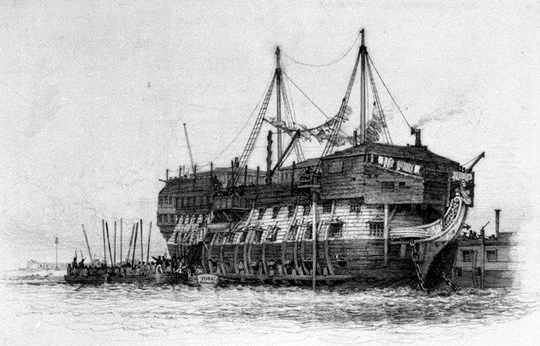Part of the “Crime & Punishment in Cocking in the Nineteenth Century” series
On the night of 4 November 1822, Benjamin Challen’s groom placed his brown mare into the stable at Brook House Farm, Cocking, but left the door on the latch. The following morning, the groom discovered that the horse was missing. After a thorough search around the farm and village, Mr Challen had hand bills, with a full description of the missing animal, circulated throughout the neighbouring towns, and the rest of the county.
One of the handbills was seen by a Mr Eagles, a farmer from Newhaven, who had purchased the mare at an auction at Lewes. It transpired that the stolen mare had been taken to Lewes on the morning of 5 November, where it was included in an auction sale by Mr Plumer Verrall. Mr Eagles purchased the horse at the auction, but to satisfy himself that the horse was not stolen, he had the vendor pointed out to him. When asked how he came to have possession of the mare, the vendor said that he was a farmer at Arundel and was on hard times, so decided to sell her. Being satisfied on this score, Mr Eagles settled up with the auctioneer, who paid the vendor the following day.
Mr Eagles sent notice to Benjamin Challen that he had bought a similar mare at the auction. Challen then travelled to Mr Eagles’ farm at Newhaven and confirmed the identity of the horse.
The thief was soon hunted down and Thomas Purser, a 32-year old agricultural labour, was taken into custody on 10 November.
Purser was brought to trial before Sir John Bayley at the Sussex Winter Assizes at Lewes on 24 December, where he was indicted on a charge of stealing the mare, valued at £30. At the trial, Purser pleaded not guilty and claimed that on the night in question he was “sleeping at the house of his washerwoman”, and that he had never before seen Mr Challen or Mr Eagles. Despite his pleas, he was found guilty and sentenced to death. Purser was one of 15 prisoners to receive the death penalty from Mr Justice Bayley at the assizes.
On 8 January 1823, by order of Robert Peel, the Home Secretary, Thomas Purser was one of 66 prisoners whose death sentences were commuted to transportation for life. He was then transferred to the York, a former warship now moored in Portsmouth Harbour, serving as a prison ship (or hulk).

On 20 May 1823, Purser was one of 202 convicts who left Spithead on board Albion, bound for Hobart in Van Diemen’s Land (now Tasmania) where they arrived on 21 October after 154 days at sea, including a stop at Cape Town. No further detail are available of Purser’s time in the penal colony.
Thomas Purser was born at Easebourne, the second child and eldest son of William Alfred Purser (1759–1828) and his wife, Mary née Payne (1760–1847). He was baptised at St Mary’s Church, Easebourne on 17 March 1790.
His great-grandparents, Thomas and Jane Purser were buried in Cocking churchyard in December 1773 and August 1769 respectively.
Little else is known about Thomas Purser’s life. The Australian Convict Records database suggest that he was married (although no record of the marriage has been found) and that he may have been living at Todham, just to the south-east of Midhurst, at the time of the offence.
It is not known when Thomas Purser died.
Sources
Ancestry.co.uk:
England & Wales, Criminal Registers, 1791-1892
UK, Criminal Records, 1780-1871
West Sussex, England, Church of England Baptisms, Marriages and Burials, 1538-1812
Convicts Transported to Australia: Thomas Purser
Claim a Convict: Thomas Purser
Convict Records: Thomas Purser
FreeReg.org.uk:
Easebourne Parish Register: 17 March 1790. Baptism of Thomas Purser
Morning Advertiser: 26 December 1822. Sussex Assizes
Morning Chronicle: 27 December 1822. Winter Home Circuit
New Times: 26 December 1822. Sussex Assizes
The National Archives: ADM 101/1/8B/3 . List of 200 convicts embarked on board the ship [Albion} from HM hulks Leviathan and York
Old British News: Death Sentences. 1822
Picture credits
HMS York: Wikimedia Commons